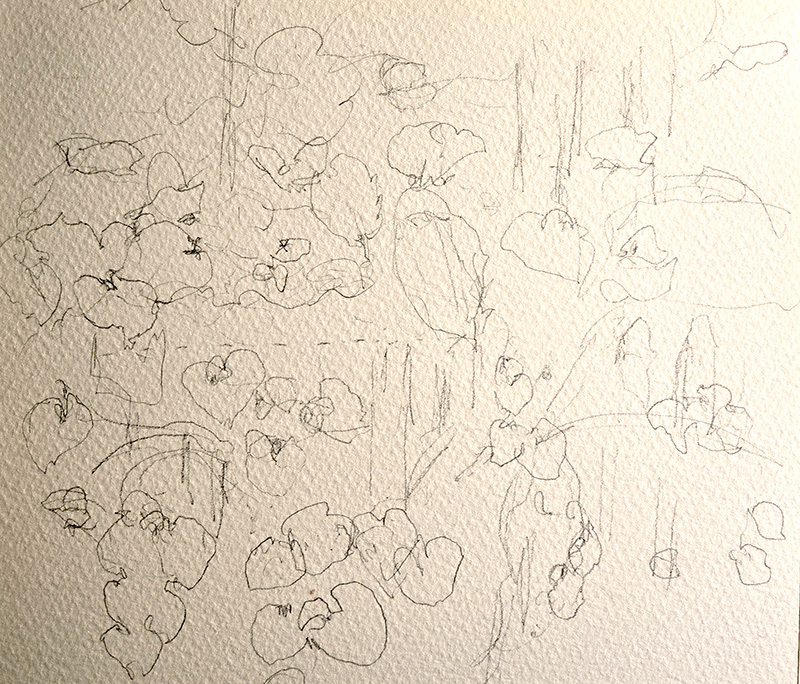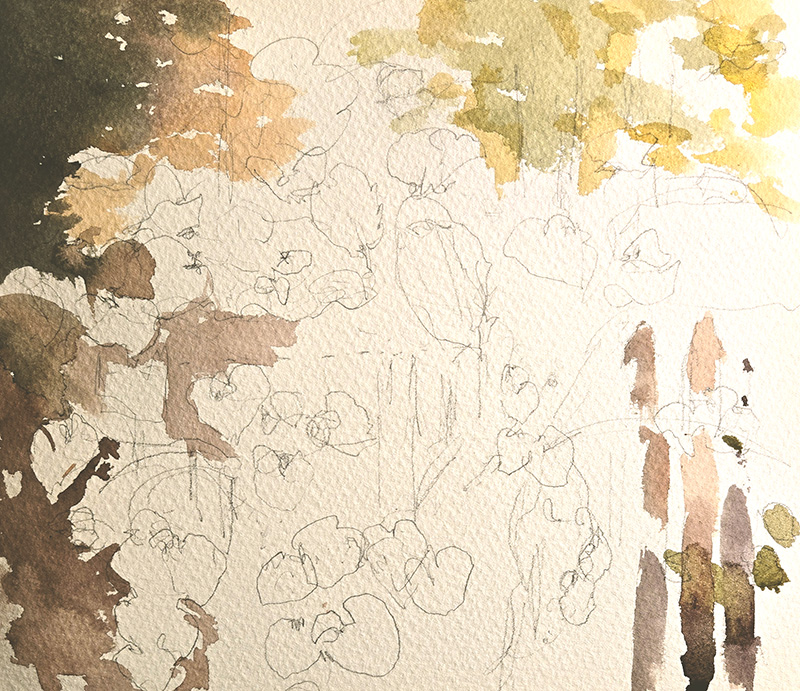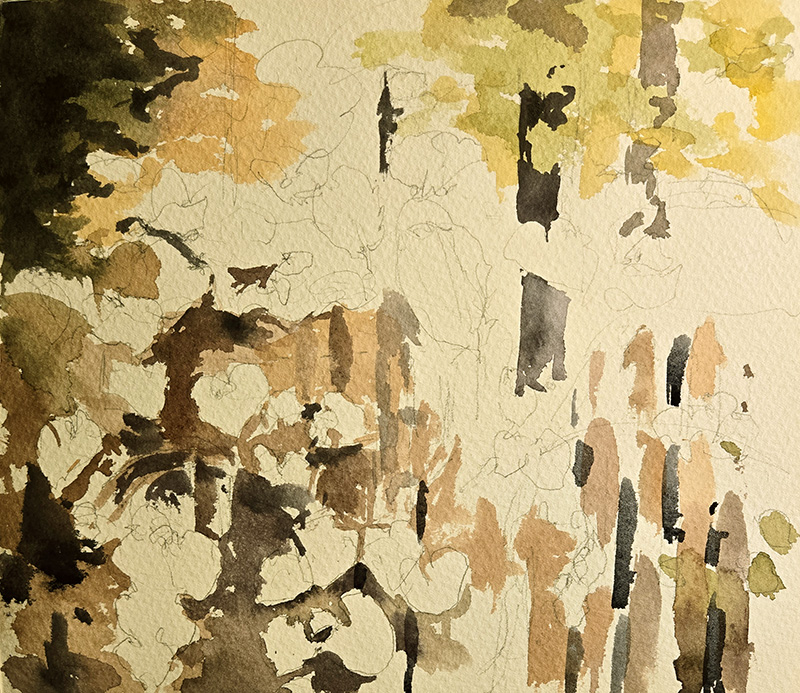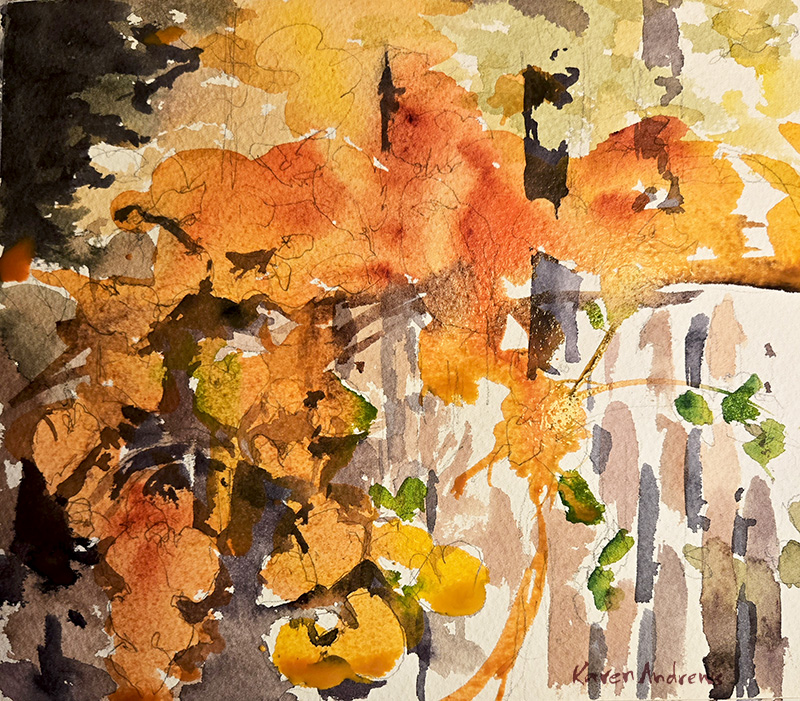Some images stay with us, even when tucked away in old files. Over 20 years ago, I captured a photograph of my neighbor’s fence in mid-autumn—probably something I’d walked by a hundred times without a second glance. But on that particular day, the leaves erupted in a burst of color, demanding my attention.
Recently, I was reading about the Reticular Activating System (RAS)—a part of the brain that helps us focus on what we tell ourselves is important. If you decide to look for heart shapes, for instance, you’ll suddenly notice them everywhere. Inspired by this idea, I set out to find images in my archives that had once captivated me. That’s when I refound the photograph.
At first glance, it was a complex and cluttered composition—a tangle of tiny shapes layered over the stark fence. But I was drawn to the challenge of translating its energy into paint, of distilling the essence of that explosion of autumn color into something expressive yet simplified.

Finding the Form
As a painter with a background in various techniques, I often work spontaneously, trusting my instincts. My first step? A sketch—something loose to help me make sense of the underlying structure. I decided to start with the larger leaf shapes, allowing the composition to take shape organically.
While I sometimes create multiple versions of a painting, I approached this one as an experiment in slowing down. I have a tendency to paint quickly—sometimes too quickly—so I began by placing dark background marks, one at a time, in each corner of the painting. This isn’t exactly a textbook watercolor technique, but I often resist formulaic approaches. Instead, I let the process lead me.

Letting Go
As I worked, a new idea emerged: what if I left all the orange areas blank and let them become a single glowing pool of color? I decided to apply all my darker hues first and then flood the remaining leaf shapes with pigment once the rest of the painting had dried. In essence, I would let the watercolor take over and see what happened.
I mixed puddles of orange, yellow, and scarlet on my palette, filled my brush to the brim, and dropped color into the white spaces. Then, with a sense of curiosity (and a little restraint), I let it be. I went to bed, eager to see what nature—and the watercolors—would create overnight.

The Reveal
By morning, the painting had taken on a life of its own. While it didn’t exactly mirror the reference photo, I was pleased with the process—the way color had flowed, how the shapes had settled, and the unexpected beauty that had emerged.

Embracing the Unknown
Art is an ongoing lesson in trust. The creative process, much like life itself, can be both terrifying and liberating. At any given moment, self-judgment threatens to creep in, requiring a conscious shift toward self-compassion—choosing to be the kind, encouraging voice rather than the critical one.
In many ways, this mirrors the healing process. We are given parameters and limitations, faced with unknowns, and often called to change something that no longer serves us. There will be obstacles, failures, and moments of doubt, but if we can stay open—like a wide-eyed child mesmerized by the wonder of it all—there is beauty to be found in every moment.
As Thích Nhất Hạnh reminds us, every moment contains many conditions for happiness.
Enjoyed this post? Subscribe to Karen Andrews Art newsletter.

